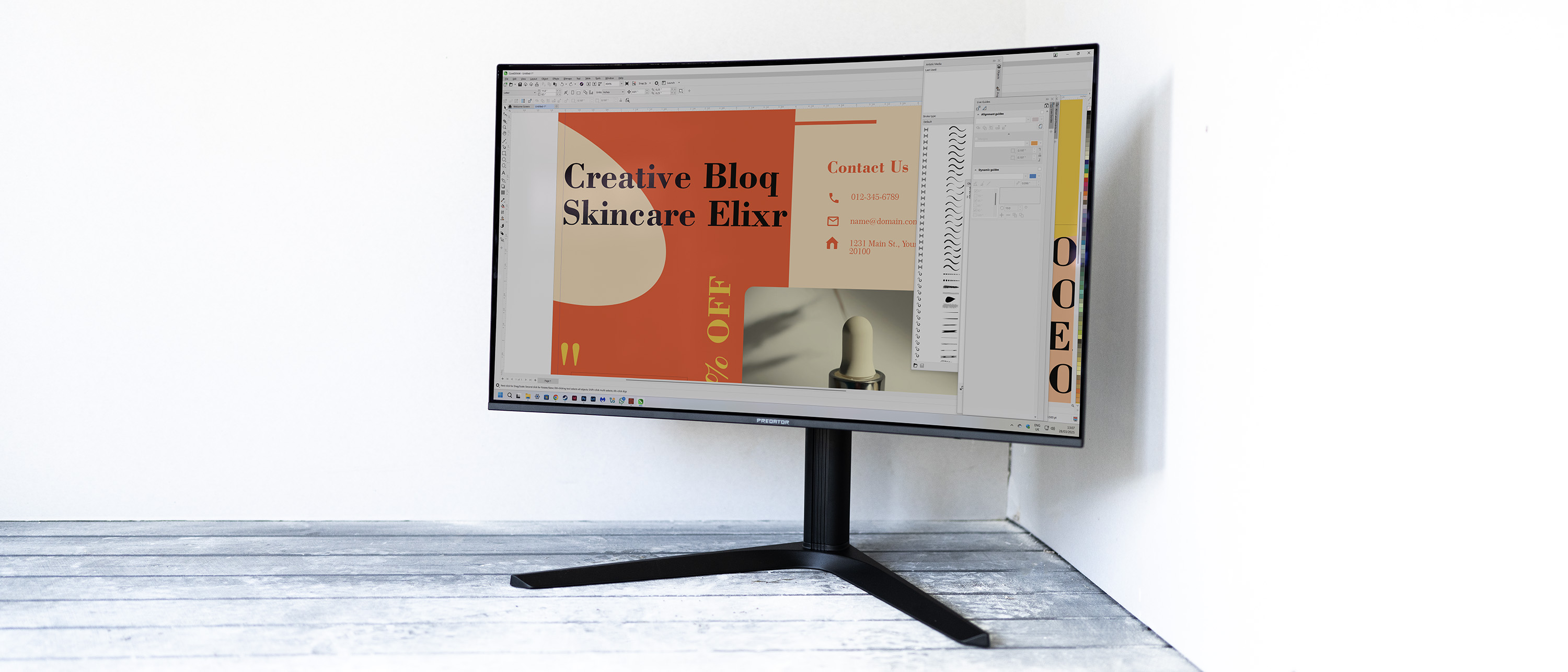Preparing Your Work For Print
Your handy checklist for planning, preparing and supplying a professional print job.
1. Sit down and plan
Decide what type of stock you'll be using in your project before embarking on the design. Different stocks require different print preparations, and 'un-designing' your print project at the final stage is a huge headache. If in doubt, you should hold off on the work until you know the exact supply requirements.
2. Call your printer
Again, before the design stage, ensure that your printer is aware of the job in hand and any special requirements you may have. A good printer will be able to give you specific artwork requirements for different stocks and even suggest more creative means of attaining a particular effect on your given budget.
3. Appreciate the print process
Understanding the print process will help you be more creative with your project. CMYK inks are printed in that order: cyan first, followed by magenta, yellow and key. Experiment with rich blacks or even overprint and knock-out tricks. A good knowledge of the printing order means you can add effects without paying for special finishes.
4. Software skills
The correct tools don't just make the design process easier, they also prevent common print errors from cropping up and costing you time and money later down the line. So use the correct tools for layout - Adobe InDesign or QuarkXPress - or prepare your files properly in Acrobat.
5. RGB for design, CMYK for print
If you're creating artwork in Photoshop or Illustrator, keep the creative process in RGB. Once that's finalised, save a new version as a flattened TIFF and convert it to CMYK. This process ensures that, should you need to go back and artwork your project a little more, you can do so without having to change the colour profile back a third time, losing definition and sharpness.
6. Colour reference
Colour reference is key to any print project. Even the most precisely calibrated monitor won't give you a decent idea of how your work will print, so invest in a colour reference guide and use it. A good Pantone reference book, comprising coated and uncoated swatches, means you and your printer will know exactly what effect you're trying to achieve.
7. Use the correct fonts and weights
When creating layout pages of text and image combinations, it's far too easy to style text using a faked italic or bold setting. Such a process increases the risk of print errors, with fonts being missed out, so ensure you replace any faked font styles with a 'true' italic or bold weighting before preflighting.
Get the Creative Bloq Newsletter
Daily design news, reviews, how-tos and more, as picked by the editors.
8. Register your mark
Make sure you provide trim and registration marks for your printer, using your software's output settings, and ensure any images you want to bleed from the page extend beyond the trim marks. Use slugs - a box of text outside the printed area - for printing instructions or project details, and include colour bars for your printer to check against a colour reference guide.
9. Preflight properly
The final stage before supply is to preflight and package your job. Adobe InDesign and QuarkXPress both support a 'collect for output' option, which collects all the necessary fonts and images, checks resolutions and colour profiles, and flags any potential print problems. It may seem dull, but getting it right now is crucial, so take your time.
10. Always proof
Always request a full-colour proof and, if you can, get to the printers to sign it off in person. This is advantageous for several reasons, the first being that you can check any errors yourself. More importantly, it'll help you to get to grips with the print process and enable you to quiz the operators about how to achieve new effects and styles.

Thank you for reading 5 articles this month* Join now for unlimited access
Enjoy your first month for just £1 / $1 / €1
*Read 5 free articles per month without a subscription

Join now for unlimited access
Try first month for just £1 / $1 / €1

The Creative Bloq team is made up of a group of design fans, and has changed and evolved since Creative Bloq began back in 2012. The current website team consists of eight full-time members of staff: Editor Georgia Coggan, Deputy Editor Rosie Hilder, Ecommerce Editor Beren Neale, Senior News Editor Daniel Piper, Editor, Digital Art and 3D Ian Dean, Tech Reviews Editor Erlingur Einarsson, Ecommerce Writer Beth Nicholls and Staff Writer Natalie Fear, as well as a roster of freelancers from around the world. The ImagineFX magazine team also pitch in, ensuring that content from leading digital art publication ImagineFX is represented on Creative Bloq.
